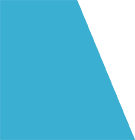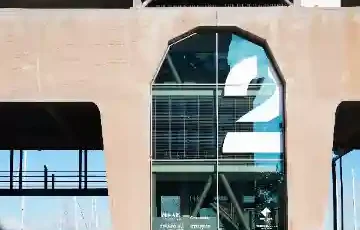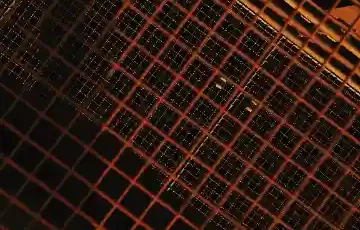
Software is protected legally through automatic copyright on source code and object code, a patent for technical innovations, trade secrets for knowhow, and trademark or trade name registration for commercial identification. The protection strategy depends on the specific characteristics of your software and business objectives.
Legal protection of software under Dutch law requires a layered strategy where you combine multiple intellectual property rights. Your software contains various protectable elements: the creative code, technical functionality, confidential business information, and commercial features such as names and logos. Therefore, you examine which forms of protection best suit your specific situation.
The Dutch Copyright Act automatically protects your computer programs from creation, covering approximately 95% of software developed in the Netherlands through this no-cost baseline protection.
What Does Copyright Protect in Software Under Dutch Law?
Copyright automatically protects the specific source code and object code of your computer program as soon as you create it, including preparatory design materials such as flowcharts and technical designs that can lead to a computer program.
The Dutch Copyright Act (Auteurswet) stipulates that computer programs and preparatory materials qualify as works eligible for copyright protection. For protection, your software must have an original character bearing the personal stamp of its creator. Custom-developed software typically meets this threshold quickly.
Key advantage: you need not file an application or complete registration. Protection arises automatically upon creating the code. Nevertheless, you wisely document all development steps, date them, and archive carefully. This demonstrates when, on what precisely, and with whom the copyrights originated.
However, copyright protection has limitations. Only the expression of the idea receives protection, not the underlying idea itself. Concretely: someone who copies and incorporates your literal source code into their own program commits infringement. Conversely, the functionality, programming language, algorithms, and principles underlying your software fall outside protection. A competitor may therefore develop a comparable program with identical functionality, provided they use different code.
Who Acquires in the Netherlands Copyright on Developed Software?
The creator – the person whose creativity is reflected in the work – is designated as copyright holder. For software developed in employment relationships, this is more nuanced. When an employee develops software within the normal performance of their duties, the employer automatically acquires copyright. This employer copyright applies exclusively in labor-law authority relationships, thus not for freelancers or interns.
In relationships between client and contractor, copyrights initially rest with the contractor as creator. The fact that you as client commission software development and bear costs changes nothing. Without explicit agreements, the developer remains rights holder. A legal entity that publicly discloses software as originating from itself without mentioning the developer is presumed copyright holder, but this escape route offers insufficient certainty.
Therefore always contractually arrange written transfer of copyrights. An oral agreement that rights accrue to you does not suffice – transfer must occur by deed, namely a written signed document. Alternatively, you obtain a usage license, whereby copyrights remain with the developer but you receive usage rights.
Research shows that 60% of software ownership disputes arise from inadequate contractual arrangements regarding copyright transfer between clients and developers.
When Does a Patent Protect My Software in the Netherlands?
A patent protects the technical functionality and inventive solution behind your software, provided it is new, inventive, industrially applicable, and has technical character extending beyond software as such.
Patent law offers stronger protection than copyright because it also protects functionality and underlying ideas. However, software as such is legally excluded from patentability in the European Union. The door remains open exclusively for ‘computer-implemented inventions’ where software contributes to solving a technical problem.
You file a patent application with the Benelux Office for Intellectual Property. The software must meet strict requirements:
- Novelty: the technology must not have been publicly disclosed anywhere before application
- Inventiveness: the solution must not be obvious to a skilled person
- Industrial applicability: the invention must be practically usable
- Technical character: the software must achieve a technical effect with the computer
A patent has a maximum protection period of 20 years, shorter than copyright’s 70 years. Moreover, the application procedure requires substantial investments. In the Netherlands you pay €80 for digital filing and between €100 (national) and €794 (international) for examination of the state of the art. A patent attorney typically costs between €2,000 and €10,000. After grant you pay annual maintenance fees ranging from €40 in the first year to €1,400 in later years.
Additionally, the patent office publishes your application eighteen months after filing, giving competitors insight into your technical solution. In some cases you prefer confidentiality, which this publication requirement prevents.
An example: an algorithm recommending music based on emotion recognition can obtain patent protection if it offers a novel technical solution for analyzing emotional responses. A standard webshop combining existing techniques conversely fails to meet the required inventiveness.
According to European Patent Office data, only a limited percentage of software-related patent applications are granted, as much software involves application of existing techniques without sufficient inventiveness.
What Protection Do Trade Secrets Offer Under Dutch Law?
Trade secrets protect undisclosed knowhow and business information having commercial value, provided you take reasonable measures to keep information confidential according to the Trade Secrets Protection Act from 2018.
The Trade Secrets Protection Act (Wet bescherming bedrijfsgeheimen) regulates when information qualifies as trade secret and which enforcement measures you can take against infringement. For protection, your information must meet three conditions:
- Information must not be generally known or accessible to persons who normally deal with such information
- Information must have commercial value because it is secret
- You must have taken reasonable protective measures
Software lends itself excellently to trade secret protection because it is less susceptible to reverse engineering than some physical inventions. Google’s search algorithm illustrates this: the specific algorithms and methodology remain secret while the general concept of a search engine with personalized results is public.
For effective protection you implement technical, organizational and contractual measures:
- Confidentiality provisions: include explicit confidentiality clauses in employment contracts, commercial agreements and NDAs with business partners
- Access restriction: limit access to sensitive code and documentation to key figures within your organization
- Physical security: secure servers and development environments with access control
- Digital protection: use encryption, secured version control systems and access management
- Internal policy: establish clear policy regarding handling of confidential information
Without these measures, your information does not qualify as trade secret under the Act and you cannot invoke legal protection. Compared to copyright, a trade secret also protects more abstract elements such as the coherence of mathematical formulas or specific development methodologies.
A software escrow arrangement offers additional certainty when you as client depend on a supplier. Here the supplier deposits source code with an escrow agent. If the supplier becomes bankrupt or unable to maintain software, you receive a copy of source code including usage rights. For cloud software, source code escrow alone does not suffice, as you lack access to infrastructure and your data. For cloud services you therefore consider a data escrow construction.
How Do I Protect the Trade Name and Trademark of My Software in the Netherlands?
Your company’s trade name receives automatic protection through use, but registration as trademark with the Benelux Office for Intellectual Property provides stronger legal protection for your software name and logo.
Besides technical software protection, you also protect commercial identification. The trade name under which you conduct business arises automatically through use on internet, in advertising, on letterhead and invoices. The Trade Names Act regulates this protection.
For optimal protection you register your trade name also as trademark. Trademark registration requires formal application and covers a specific geographic area – Benelux, European Union or internationally. A registered trademark gives you exclusive rights to prohibit others from using identical or confusingly similar names or logos for comparable products or services.
Your trademark must have distinctive character and may not be descriptive. The name ‘Apple’ cannot serve as trademark for apples, but can for computers and software. If your software product’s name or logo differs from your trade name, you also file trademark registration for it. This prevents competitors from appropriating the same product name.
Also consider protection of two-dimensional designs through design rights: graphical user interfaces, website layouts and app icons may qualify for protection if novel and having individual character.
What Minimum Rights Does the Software User Have According to Dutch Legislation?
The Copyright Act contains specific provisions limiting software creator rights by granting users certain minimum rights. Without these rights, normal software use would constitute copyright infringement.
The lawful user may reproduce software if and insofar as necessary for intended use. This includes loading software into working memory, displaying, correcting errors and making backup copies when needed for use. Additionally, the user may study and test software. Reverse engineering – dissecting software to understand design – is permitted under conditions.
These minimum rights cannot be contractually excluded by the rights holder, as legislation designates them mandatory for protecting user interests.
Research indicates that 85% of software licenses attempt to restrict user rights beyond what Dutch law permits, creating unenforceable contractual provisions.
How Do I Choose the Right Protection Strategy in Dutch Law?
An effective protection strategy combines multiple IP rights and depends on your software type, business goals and budget for application procedures and enforcement.
Evaluate for your specific situation which combination offers optimal protection:
Copyright always applies as baseline protection for code. It arises automatically without costs or procedures. However, it does not protect functionality or underlying ideas.
Patent you consider for innovative technical solutions that are novel and inventive. Offers stronger protection including functionality, but requires costly application procedure and disclosure obligation. Approximately 75% of software developers choose against patent application due to complexity and costs.
Trade secret fits excellently for knowledge and information you prefer not to disclose publicly, such as specific algorithms or development methods. Requires active protective measures but avoids publication obligation.
Trade name and trademark remain essential for brand recognition and commercial protection, regardless of technical protection choice.
Practice Example Protection Strategy
An Amsterdam software company develops an innovative app for predictive maintenance in process industry. The company implements a layered protection strategy:
- Copyright: automatic protection of complete source code and object code (€0)
- Patent: application for specific machine learning algorithm generating predictions (investment €8,000 including patent attorney)
- Trade secret: training data and specific parameter configurations remain secret through NDAs and access restriction
- Trademark registration: Benelux registration for product name and logo (€349 per trademark)
This strategy protects technical innovation through patent, implementation through copyright, knowhow through trade secret, and commercial identity through trademark law.
What Happens During Collaboration and Assignments Under Dutch Law?
In software development by multiple parties, complex ownership issues arise. When multiple persons or companies jointly make original contributions to development, joint indivisible copyright arises. Developers then need each other’s cooperation for exploiting copyright.
If different contributions can be separately identified and separated – for example graphical interface versus underlying database code – each party acquires independent copyright on their created part.
Problems regularly arise upon dissolution of collaborative arrangements such as general partnerships. When one party contributes software for subsequent exploitation by the partnership, this often generates disputes after dissolution about who retains which rights. Therefore make written agreements in advance about ownership relationships and what happens with rights after termination of collaboration.
For software partially consisting of open source components, specific license terms apply. Some open source licenses require derivative works also be published under the same open source license. Thoroughly investigate which open source components you use and what license terms precisely permit. Have the licensor possibly indemnify against third-party claims.
When Should I Engage Legal Expertise in the Netherlands?
Software protection requires specialized knowledge of multiple legal fields. Engage a specialized ICT lawyer or patent attorney for:
- Contractual agreements for software development by third parties – ensure copyrights are explicitly transferred
- Patent strategy – determine whether your innovation meets requirements and whether investment justifies protection advantages
- Trade secret policy – implement legally watertight measures enabling successful invocation of Trade Secrets Protection Act
- Infringement matters – when third parties unlawfully use your software or when you receive claim for alleged infringement
Do you want legal certainty about your software protection? Our specialized lawyers analyze your specific situation and advise on optimal protection strategy for your intellectual property. Contact our law firm for personal legal advice regarding your software rights.
A proactive approach prevents costly disputes. Invest upfront in clear contracts, careful documentation and targeted protective measures. This provides the legal foundation to effectively exploit and defend your innovation against unauthorized use.









